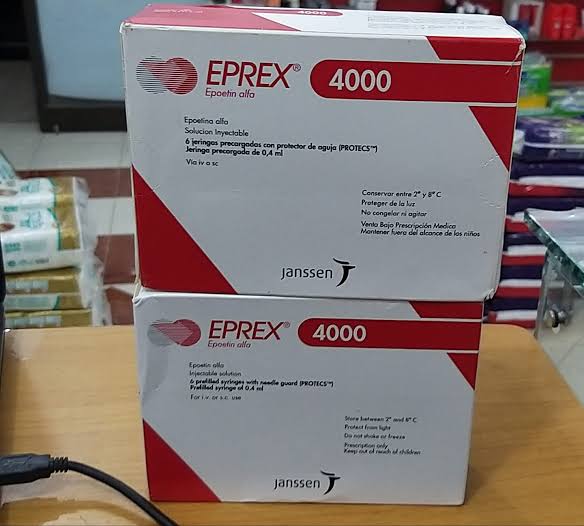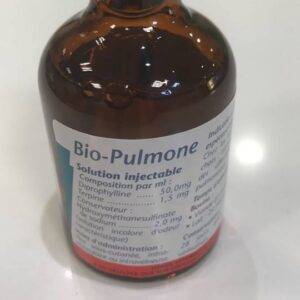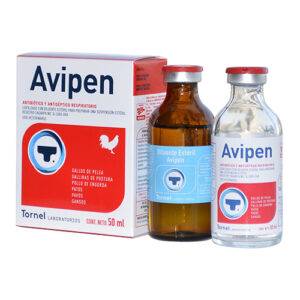Eprex 4000
Eprex 4000 is a brand name for a synthetic form of erythropoietin (EPO), a glycoprotein hormone that stimulates the production of red blood cells. EPO is produced naturally in the kidneys and is primarily responsible for regulating erythropoiesis (the production of red blood cells) in the bone marrow.
Eprex is used as a treatment for various conditions that cause anemia, especially in cases where the body is not producing enough erythropoietin naturally.
Eprex 4000 هو اسم تجاري لشكل اصطناعي من الإريثروبويتين (EPO)، وهو هرمون بروتين سكري يحفز إنتاج خلايا الدم الحمراء. يتم إنتاج EPO بشكل طبيعي في الكلى وهو المسؤول الأول عن تنظيم تكون الكريات الحمر (إنتاج خلايا الدم الحمراء) في نخاع العظام. يستخدم إبريكس كعلاج لمختلف الحالات التي تسبب فقر الدم، وخاصة في الحالات التي لا ينتج فيها الجسم ما يكفي من الإريثروبويتين بشكل طبيعي.
الاستخدامات/المؤشرات:
يستخدم إبريكس 4000 لعلاج فقر الدم في العديد من الحالات الطبية، وتحديداً تلك التي يكون فيها الجسم غير قادر على إنتاج ما يكفي من خلايا الدم الحمراء. بعض الاستخدامات الأساسية تشمل:
فقر الدم في مرض الكلى المزمن (CKD): المرضى الذين يعانون من مرض الكلى المزمن غالبا ما يعانون من فقر الدم بسبب انخفاض إنتاج الإريثروبويتين من الكلى المتضررة.
فقر الدم بسبب العلاج الكيميائي: في مرضى السرطان الذين يتلقون العلاج الكيميائي، يساعد إبريكس على مقاومة فقر الدم الناجم عن العلاج، مما يؤدي إلى تثبيط وظيفة نخاع العظام.
فقر الدم لدى مرضى فيروس نقص المناعة البشرية: يمكن استخدام إبريكس لعلاج فقر الدم الناجم عن بعض علاجات فيروس نقص المناعة البشرية، مثل زيدوفودين.
فقر الدم الناتج عن اضطرابات نخاع العظم: يستخدم أيضًا في بعض حالات فقر الدم الناتج عن خلل نخاع العظم، مثل متلازمة خلل التنسج النقوي.
الاستخدام قبل الجراحة: في المرضى الذين يخضعون لأنواع معينة من الجراحة، يمكن استخدام إبريكس لتقليل الحاجة إلى عمليات نقل الدم عن طريق زيادة إنتاج خلايا الدم الحمراء قبل الجراحة.
Key Information about Eprex 4000
Active Ingredient:Epoetin alfa: A recombinant human erythropoietin produced using DNA technology. It mimics the natural erythropoietin produced by the kidneys.
Uses/Indications:
Eprex 4000 is used to treat anemia in several medical conditions, specifically those where the body is not able to produce enough red blood cells. Some of the primary uses include:
Anemia in Chronic Kidney Disease (CKD): Patients with CKD often suffer from anemia due to decreased erythropoietin production by the damaged kidneys.
Anemia due to Chemotherapy: In cancer patients receiving chemotherapy, Eprex helps counteract the anemia caused by the treatment, which suppresses bone marrow function.
Anemia in HIV Patients: Eprex may be used to treat anemia caused by certain HIV treatments, such as zidovudine.
Anemia due to Bone Marrow Disorders: It is also used in certain cases of anemia caused by bone marrow dysfunction, such as myelodysplastic syndromes.
Preoperative Use: In patients undergoing certain types of surgery, Eprex may be used to reduce the need for blood transfusions by boosting red blood cell production prior to surgery.
Dosage and Administration:
The dose of Eprex 4000 depends on the specific condition being treated, the patient’s hemoglobin levels, and how they respond to the treatment. It is available as an injectable solution and is administered subcutaneously (under the skin) or intravenously (into a vein).
Chronic Kidney Disease: The dose usually starts at 50 to 100 IU/kg, administered 2-3 times per week, depending on the patient’s response and hemoglobin levels.
Chemotherapy-Induced Anemia: The dose starts at 150 IU/kg, given three times per week or 40,000 IU once per week.
HIV-associated Anemia: The dose usually starts at 100 IU/kg three times per week.
The goal is to maintain hemoglobin levels at an appropriate range (usually around 10-12 g/dL) to avoid complications of anemia or excessive red blood cell production. Eprex 4000
Mechanism of Action:
Epoetin alfa works by binding to erythropoietin receptors on the surface of erythroid progenitor cells in the bone marrow. This binding stimulates the proliferation and differentiation of these cells into mature red blood cells, increasing the overall red blood cell count and improving oxygen delivery to tissues throughout the body. In patients with anemia, this helps alleviate symptoms such as fatigue, weakness, and shortness of breath.
Potential Side Effects:
Common side effects of Eprex include:
High blood pressure (hypertension): This is one of the most common side effects and may require the use of antihypertensive medications.
Headaches: Headaches are another frequent side effect of erythropoietin therapy.
Blood clotting risks (thrombosis): Eprex can increase the risk of blood clots, especially if hemoglobin levels rise too quickly. This can lead to deep vein thrombosis (DVT), pulmonary embolism, or stroke in rare cases.
Fever and flu-like symptoms: Some patients experience fever, chills, and flu-like symptoms after receiving injections.
Bone pain: As the bone marrow becomes more active in producing red blood cells, some patients report discomfort or pain in their bones.
Seizures: Rarely, patients may experience seizures, particularly if they have a history of epilepsy or other risk factors. Eprex 4000
Skin reactions at the injection site: Redness, swelling, or irritation at the injection site can occur.
Less common but serious side effects include:
Pure Red Cell Aplasia (PRCA): This rare condition occurs when the body develops antibodies against erythropoietin, leading to a severe reduction in red blood cell production.
Heart attack or stroke: Especially in patients with existing cardiovascular conditions, there is a risk of heart attack or stroke if the hemoglobin levels are raised too high.
Contraindications:
Eprex should not be used in the following cases:
Uncontrolled hypertension: Since Eprex can raise blood pressure, it is contraindicated in patients with uncontrolled high blood pressure.
Hypersensitivity to Epoetin alfa: Patients allergic to any component of the drug should not use it.
Cancer patients where the goal is a cure: In certain types of cancer, erythropoietin may promote tumor growth. Eprex is usually not recommended if the cancer is curable and the goal of treatment is long-term survival.
Precautions:
Monitoring Hemoglobin Levels: It is crucial to regularly monitor hemoglobin levels during Eprex therapy. The goal is to raise hemoglobin levels enough to alleviate anemia without exceeding the recommended range, as higher levels increase the risk of adverse cardiovascular events like stroke or heart attack. Eprex 4000
Iron Supplementation: Eprex therapy is most effective when there is enough iron in the body for red blood cell production. Many patients may require iron supplementation, either orally or intravenously, to prevent iron deficiency while on Eprex.
Cancer Patients: In patients with cancer, the benefits and risks of Eprex need to be carefully weighed. While it can alleviate anemia due to chemotherapy, there is concern that it may promote the growth of some tumors.
Administration in Special Populations:
Pregnancy: Eprex should be used during pregnancy only if the potential benefits justify the risks to the fetus. There is limited data on its use in pregnant women.
Lactation: It is not known whether Eprex is excreted in human milk, so caution should be exercised when administering to breastfeeding women.
Pediatric Use: Eprex has been used successfully in children for treating anemia associated with chronic kidney disease or chemotherapy, but the dosage may differ based on the child’s weight and condition.
Availability and Dosage Forms:
Eprex 4000 is available as a solution for injection. The 4000 IU refers to the amount of Epoetin alfa in each dose.
It comes in various dosages, such as 1000 IU, 2000 IU, 4000 IU, 10,000 IU, and 40,000 IU, depending on the patient’s needs.
Pre-filled syringes: Eprex is often provided in pre-filled syringes for ease of use and accuracy in dosing.
Cost and Availability:
The cost of Eprex 4000 varies depending on the region, healthcare system, and insurance coverage. It is a prescription medication and may be covered under insurance plans for approved indications, such as CKD-related anemia or chemotherapy-induced anemia. However, in some regions, it may be costly without insurance coverage.
Conclusion:
Eprex 4000 (Epoetin alfa) is a valuable medication for managing anemia in patients with chronic kidney disease, those undergoing chemotherapy, and other medical conditions where erythropoietin production is compromised.
It helps to restore normal red blood cell counts, improving oxygen delivery to tissues and relieving symptoms of anemia. However, careful monitoring and appropriate use are crucial to avoid side effects such as hypertension, blood clots, and cardiovascular events. Always use Eprex under the guidance of a healthcare professional, with regular monitoring of hemoglobin levels and iron status to ensure its safety and effectiveness.





Reviews
There are no reviews yet.